Backpack Hunting Shelters Guide - What’s Right for You
By Josh Kirchner
If you’re gonna be a backpack hunter, you’re gonna need a home away from home. A place where you can retreat from inclement weather and get a good night’s rest for the day ahead. This means some sort of tent/shelter is in order. The good thing is, there are tons of options out there. The confusing thing is, there are tons of options out there!
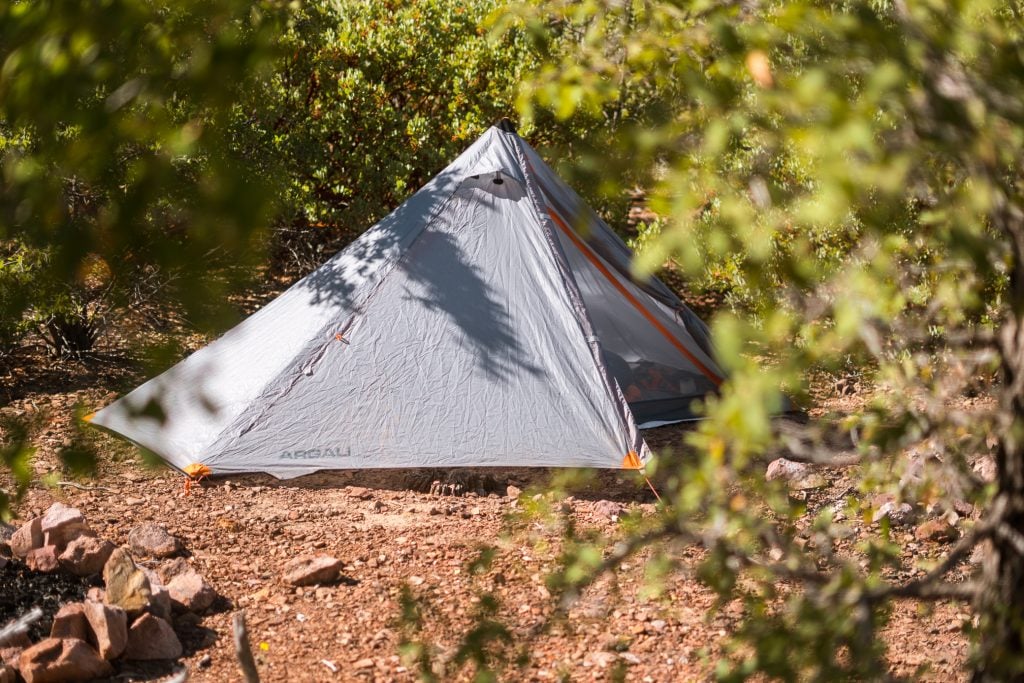
For that reason, I want to break down the different styles as well as a few things to consider when choosing a tent/shelter for backpack hunting. The goal? Help you pick the best system you can for your own backpack hunts. Let us proceed.
How Big of a Tent Do I Need? – “The Plus 1 Rule”
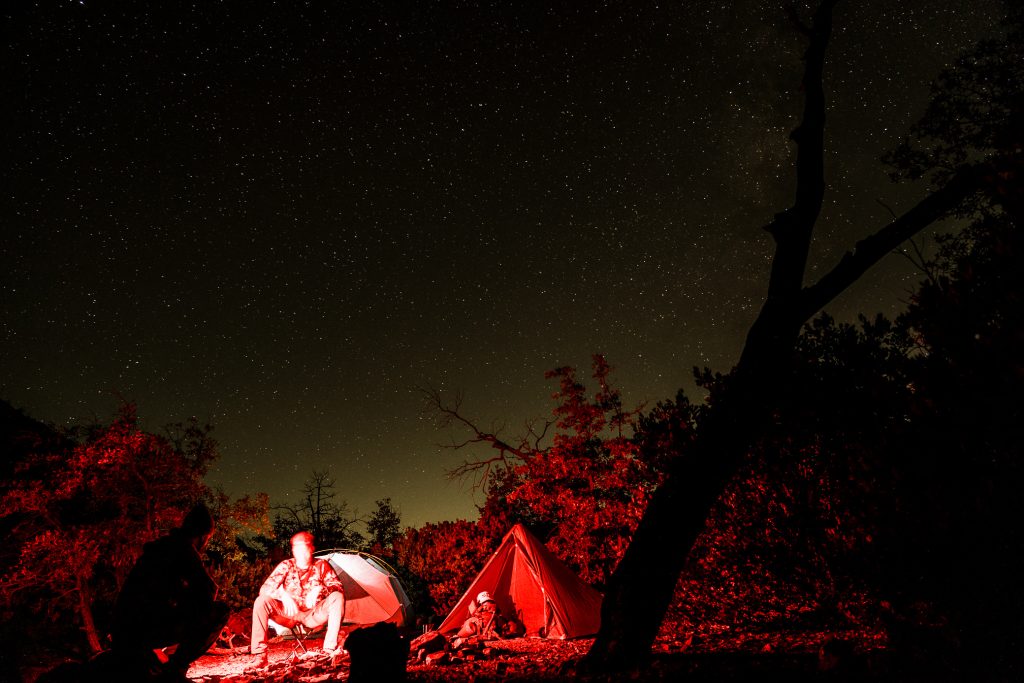
To get this party started, let’s go over how to pick the right size tent for you. Picking the right size tent is essential for making sure you get the perfect blend of interior livability and the least amount of weight. A tent too small will yield a coffin-like feel. Some might be ok with this. And a tent that is too big will have loads of room, but take up a greater amount of space in your pack as well as be much heavier.
The best way to look at it for MOST brands is by following the “plus 1 rule.” What that means is whatever the amount of people you’re planning on sharing a tent with you’ll want to go plus 1 of that over the listed size of the tent. So, if you’re planning on sharing a tent with 1 person, making it 2 people total, you’ll go plus 1 from that number 2, bringing it to 3, and that’s the size of tent you’ll want to get. Generally, if you were to get a 2p for 2 people, you better be very good friends with that other person, because you will be cuddling.
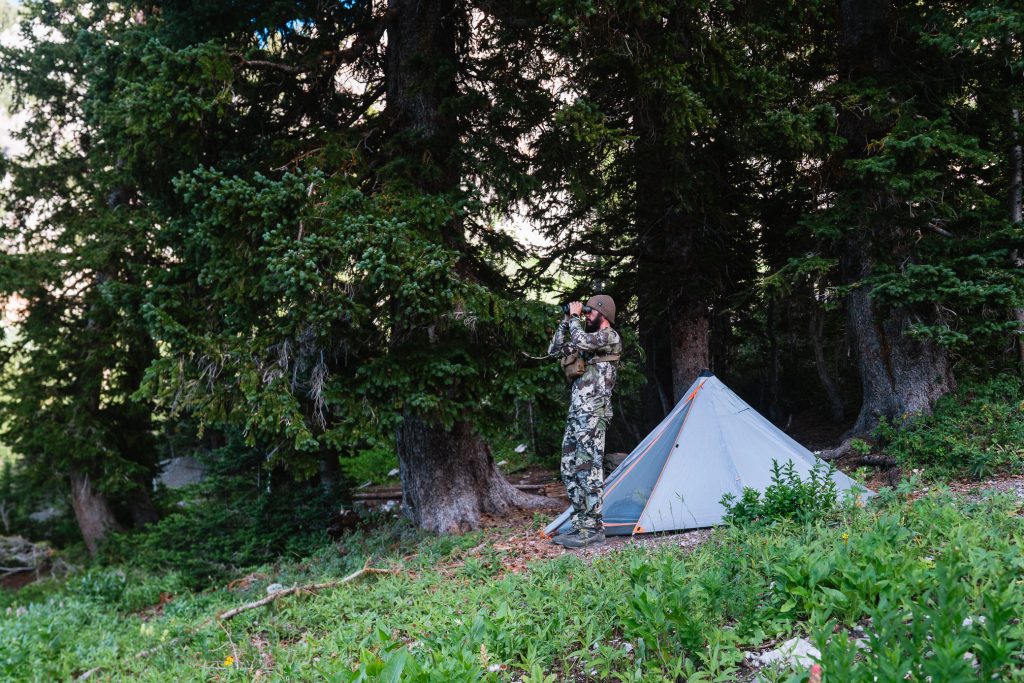
When it comes to going solo out there, you can absolutely get a 1p-rated tent/shelter for that, but many of the 1p tents are very coffin-like. If you’re ok with that, then by all means save the weight and press on. However, if you’d like some room to breathe, opt for a 2p and you’ll be much happier.
Floorless Shelter vs. Floored Shelter
Another option you’ll have is choosing between a floorless or a floored shelter. Each of them has their own pros and cons and neither is necessarily better than the other across the board. This is all going to come down to you and your style.
Floorless Tent Design
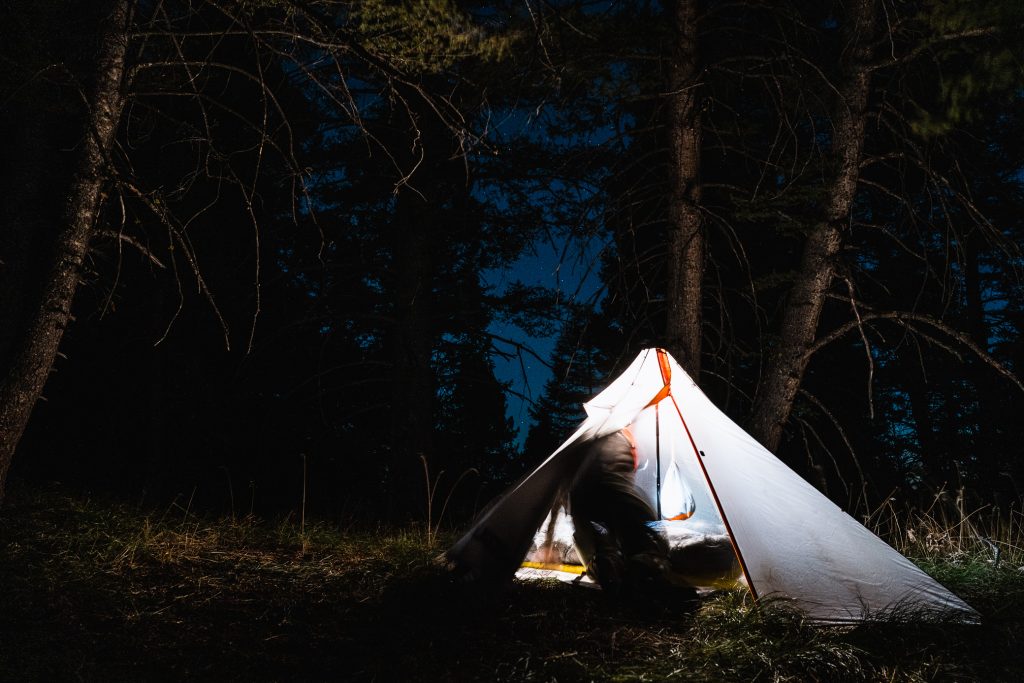
Floorless shelters will undoubtedly be the most ultralight option between the two. Plain and simple, having no floor means less material, which means less weight and bulk for you to carry. And on those rainy muddy days, walking/crawling into a floorless shelter is so much more seamless. There is no need to worry about tracking anything from outside into the shelter because there is no floor to get dirty. Plus, when you’re just waking up all snuggled up in your bag, the absence of a floor allows you to fire up your stove for coffee/breakfast right next to you without the fire hazard of doing so with a floor, or in a small vestibule.
Floored Tent Design
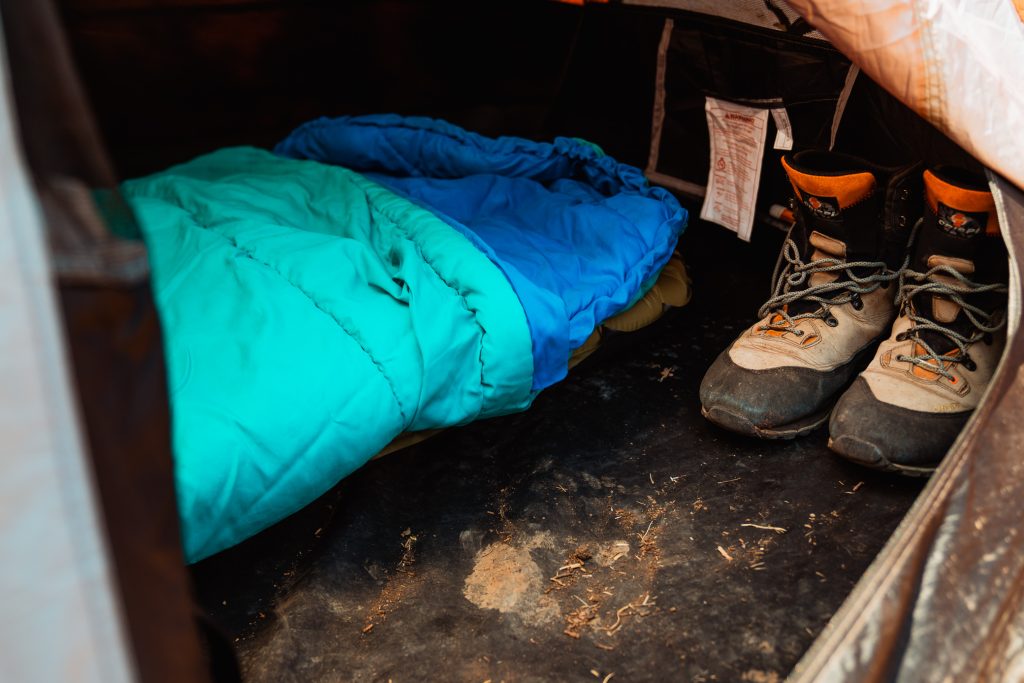
On the other side of the court, floored shelters are also fantastic options. If you are hunting in an area with lots of mice, snakes, scorpions, etc. having the barrier of a floor makes sense. A friend of mine once slept in a floorless shelter in Arizona and woke up completely covered in chigger bites. Not a fun experience. I don’t recommend it and neither does he. Because floored shelters are usually dual-wall, this will act as a barrier from condensation. Floorless shelters are usually a single-wall design and are famous for the condensation they get through the night.
Freestanding Hunting Shelters
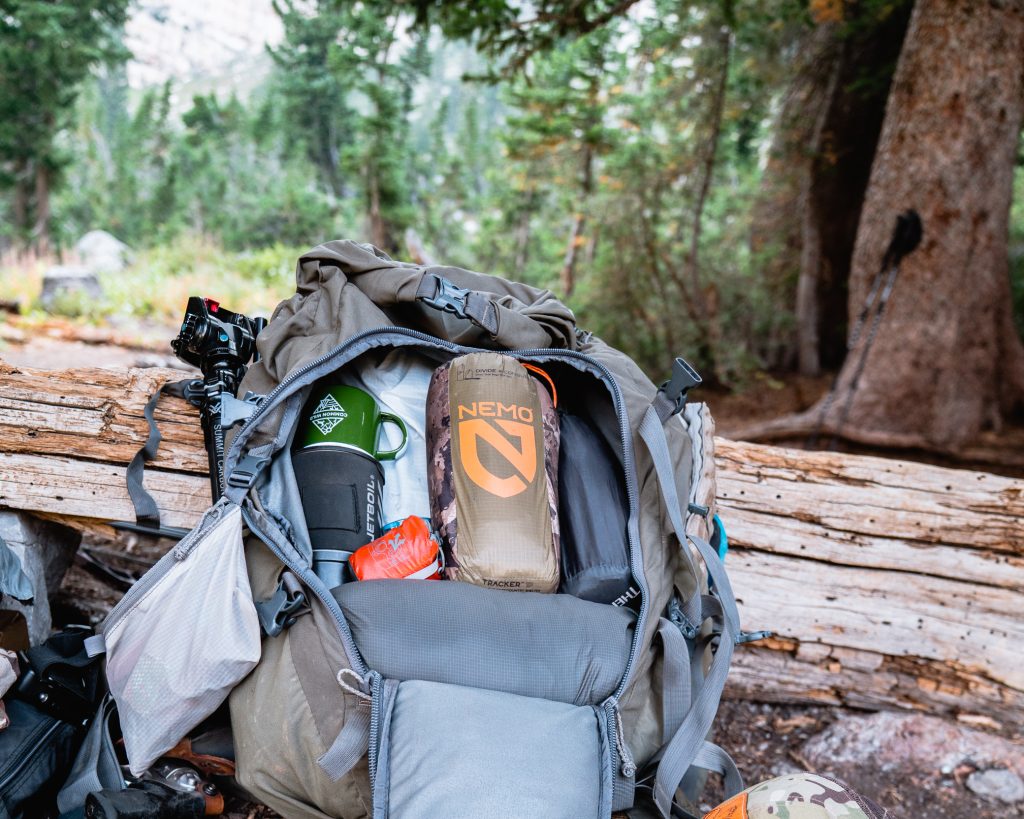
Freestanding tents are for sure the most common backcountry shelters there are. These are going to be the more dome-style type tents with an internal or external pole system that makes up the bones of the tent. Think of it like a skeleton. And it’s that pole system that allows these tents to be set up with zero stakes, hence the name “freestanding.” Freestanding tents usually have a vestibule to store and protect gear from weather, without it taking up any livability in your sleeping area. They’re also usually a dual-wall set up with a rainfly that attaches separately from the main tent. The main tent has a bathtub floor to it.
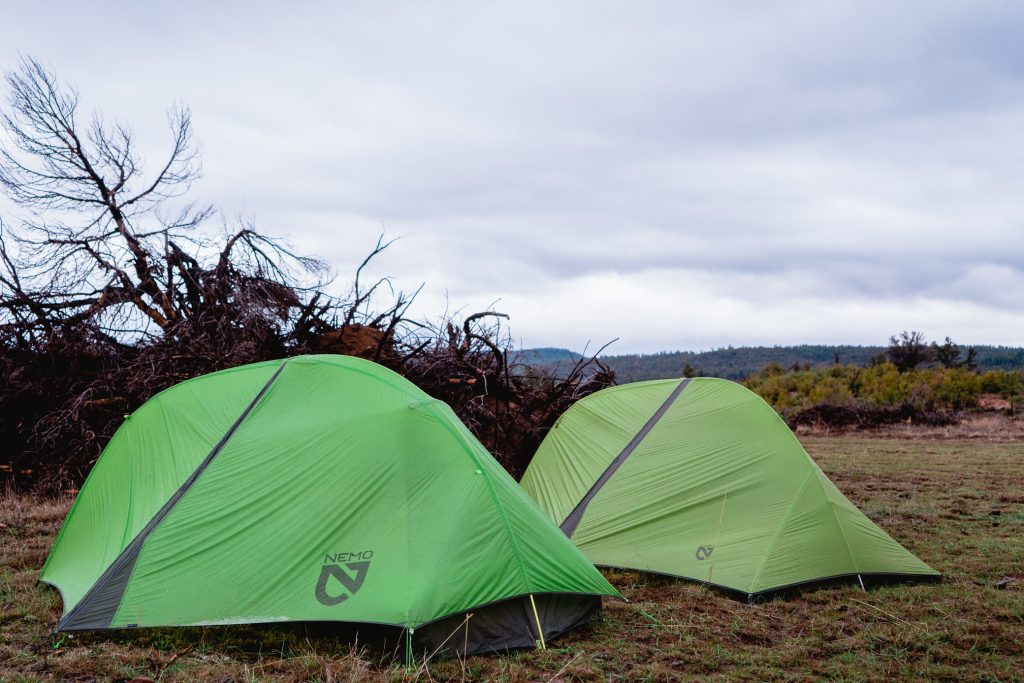
These tents are a great option for backpack hunting, but don’t come without any cons. The first one is they usually can’t be set up in the rain without getting the inside of the tent wet. Because the rainfly attaches separately, you’ll need to be quick on your setup if Mother Nature is knocking on the door. Something else I’ve personally noticed is that even with guy out lines, these can suffer in the wind. I’ve had a few bent poles and tent walls hitting me in the head all night. It’s not something that happens on a regular basis, but I have had it happen if there is a significant storm.
Tipi Shelters for Hunting
The popularity of Tipi shelters is for sure going up in the hunting world. It’s for good reason too. These shelters offer the most room for livability at the smallest weight penalty. Tipi shelters look exactly like the name states…a tipi. These are generally single-wall designs with one center pole that runs from the very top of the tipi down to the ground. From there, all sides are held down and out via stakes. Another standout feature of tipi shelters is the fact that many offer the ability to use a wood-burning stove. This is an absolute game-changer in the late season. You could literally be down to a t-shirt on the inside of your shelter when it’s frigid outside. A few tipi shelters also offer the ability to save weight and go floorless or use a floor if you’re not into that sort of thing. This is a versatile choice for the backpack hunter.
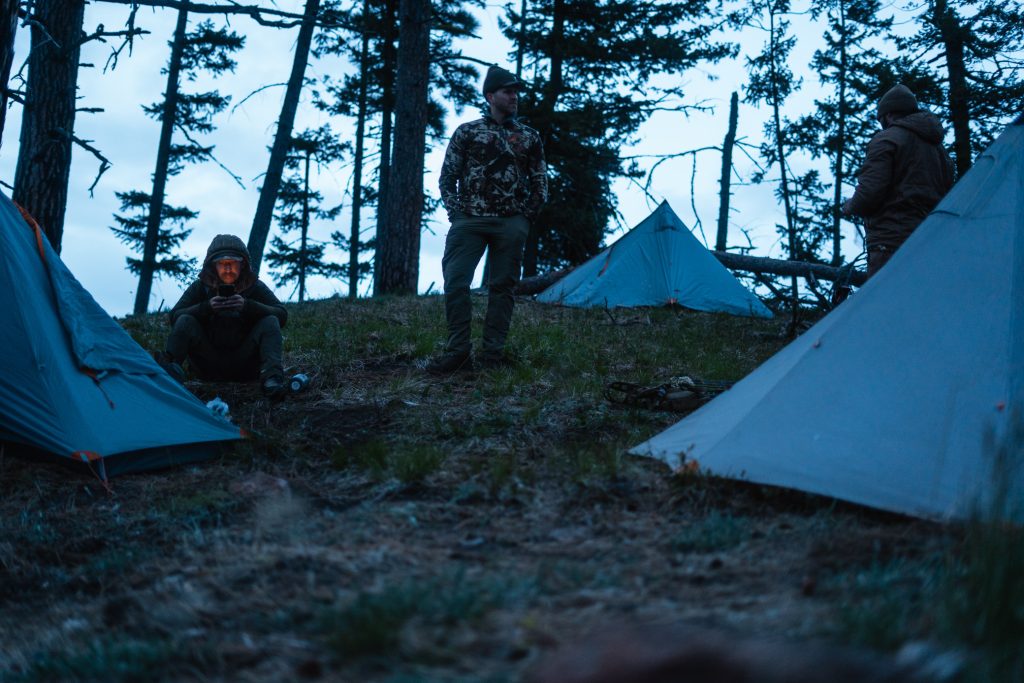
Because of this non-freestanding design, these cannot be pitched without the aid of stakes. And on that note, there are usually quite a few of them that need to be used for pitching, unlike freestanding tent models. Another downfall of living the tipi life is the fact that these have a pretty large footprint. So, if you’re trying to set up a tent in a deer bed, most tipis will test your creativity on finding or making enough room to pitch a tent there.
Hunting Tarps
For the minimalist of minimalists out there, you might want to consider a tarp as a shelter. It’s about as lightweight as you can get shy of no shelter at all. We’re talking quite literally ounces vs. pounds. Tarps are floorless setups that are usually pitched via trekking pole/poles and stakes. Generally, they have an A-frame-like elongated shape to them and no doorway. Most folks will run a piece of Tyvek on the inside to protect their sleeping pad and throw their sleeping bag on top. That’s about it. If you’re looking for the bare minimum, the tarp might be for you.
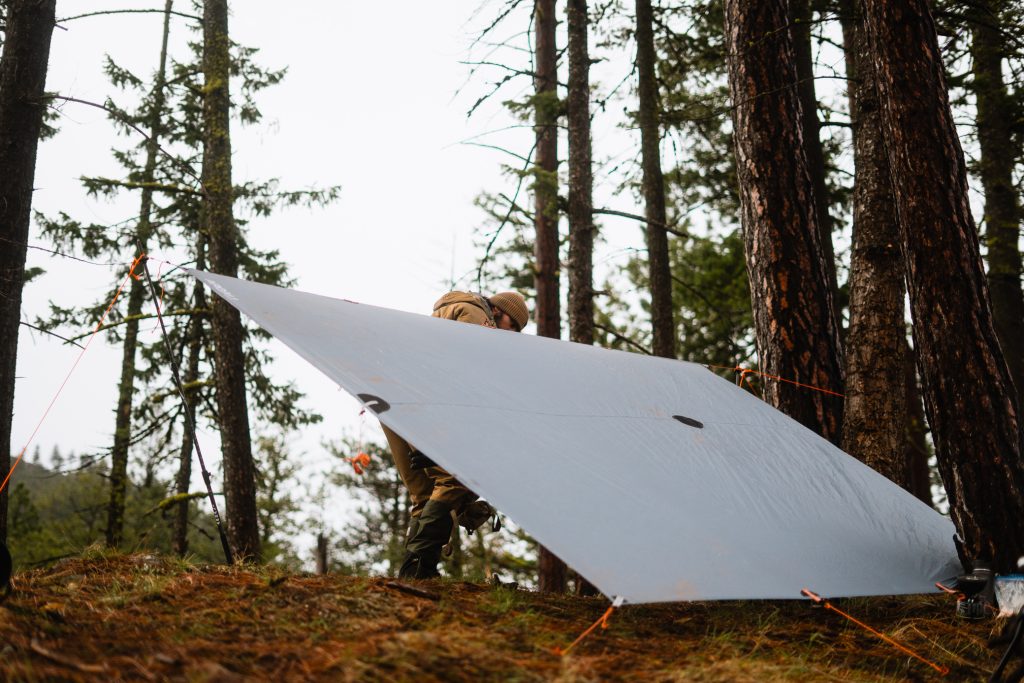
One of the big ifs of a tarp is when it comes to the weather. Of course, design and shape have an impact on what I’m about to say, but hear me out. With the more A-frame type designs the open fronts and backs, will protect you from rain/snow falling straight down, but if there is wind that moisture could blow right in through these openings. To combat that, some will run a bivy sack under the tarp as well. And when it comes to pitching these, there is for sure a learning curve to it. So, if you decide to go this route, be sure to familiarize yourself with that process.
Which hunting shelter is best for you?
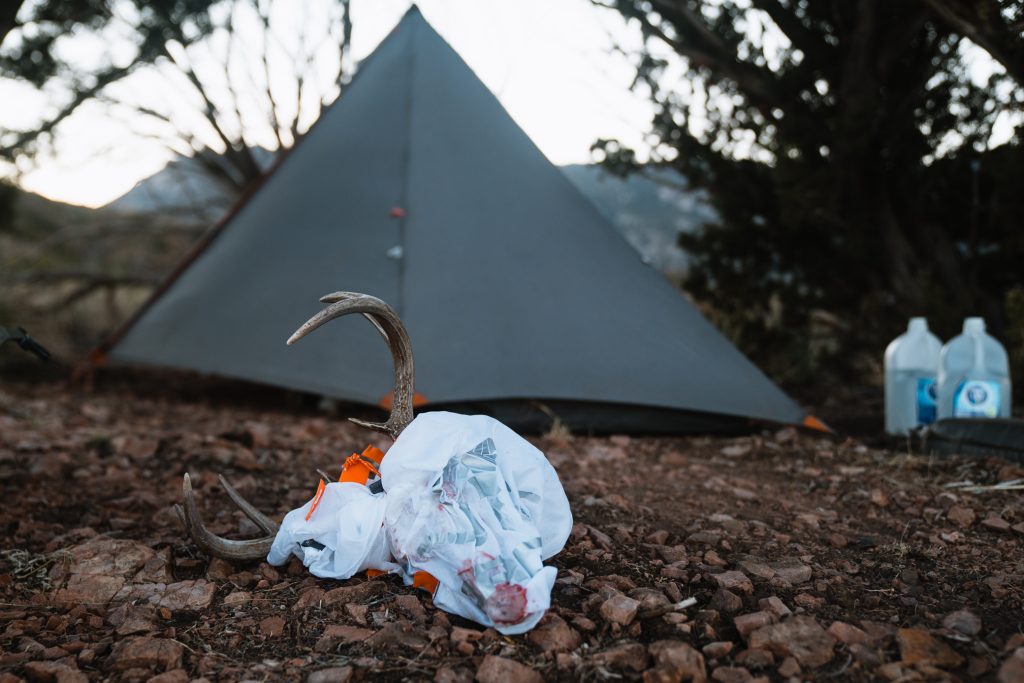
The options I’ve talked about above are merely that. I didn’t want to necessarily give the impression that certain options are better than others, because they’re generally not. One might be better suited for a certain individual, but it isn’t a one-size-fits-all purchase. Which brings me to what I’d like to leave you with. No matter the gear, use the things that you have the most confidence in. Some of this will come from trial and error of course, but listen to yourself about what you personally need out of a shelter. Find YOUR best shelter, not someone else’s. Find your next shelter for your hunt on BlackOvis.com.
